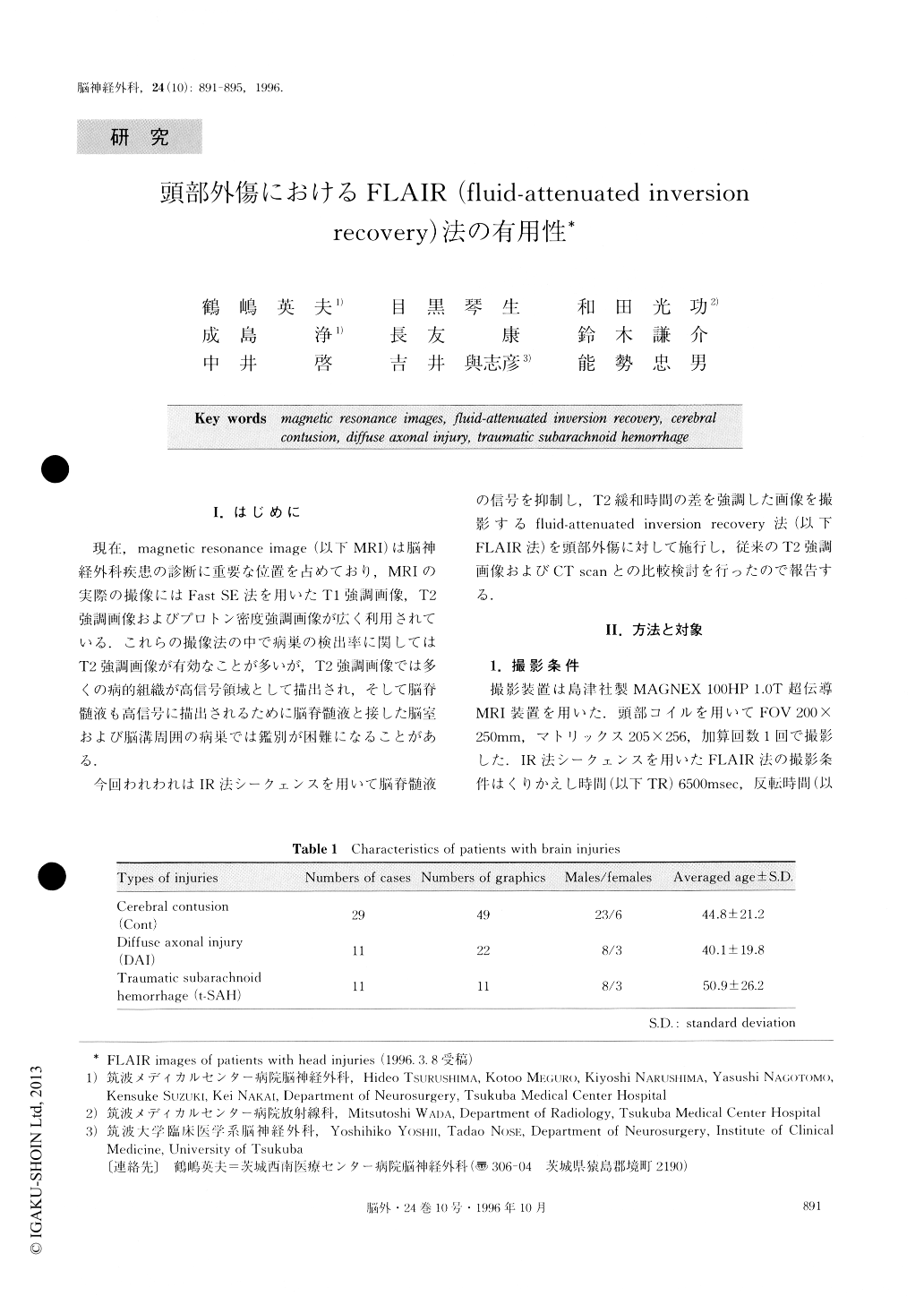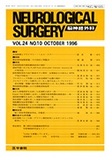Japanese
English
- 有料閲覧
- Abstract 文献概要
- 1ページ目 Look Inside
I.はじめに
現在,magnetic resonance image(以下MRI)は脳神経外科疾患の診断に重要な位置を占めており,MRIの実際の撮像にはFast SE法を用いたT1強調画像,T2強調画像およびプロトン密度強調画像が広く利用されている.これらの撮像法の中で病巣の検出率に関してはT2強調画像が有効なことが多いが,T2強調画像では多くの病的組織が高信号領域として描出され,そして脳脊髄液も高信号に描出されるために脳脊髄液と接した脳室および脳溝周囲の病巣では鑑別が困難になることがある.
今回われわれはIR法シークェンスを用いて脳脊髄液の信号を抑制し,T2緩和時間の差を強調した画像を撮影するfluid-attenuated inversion recovery法(以下FLAIR法)を頭部外傷に対して施行し,従来のT2強調画像およびCT scanとの比較検討を行ったので報告する.
FLAIR (fluid-attenuated inversion recovery) images are MR images obtained with an inversion recovery sequence, which has a long inversion time (TI) and a long echo time (TE). We examined 29 cases (49 gra-phics) of cerebral contusion, 11 cases (22 graphics) of diffuse axonal injury (DAI) and 11 cases (11 graphics) of traumatic subarachnoid hemorrhage (t-SAH) with FLAIR sequence consisting of a repetitive time (TR) of 6500 msec, TI of 1700 msec and TE of 110 msec, andthese graphics were compared with T2-weighted im-ages by spin-echo sequence (TR 2500 msec, TE 90 msec) and computed tomographic (CT) scans. Some le-sions of DAI were demonstrated more clearly with FLAIR images than with conventional T2-weighted images. Although contusion could be detected with FLAIR images as well as with conventional T2-weight-ed images, lesions adjacent to cerebral sulci were better delineated with FLAIR images. Because the cerebro-spinal fluid signals in cerebral sulci were low-intensity, FLAIR images were useful in detecting lesions of the cerebral cortex adjacent to cerebral sulci. Although it has been reported that detection of SAH is difficult with standard T1-and T2-weighted images, the pre-sence of t-SAH could be confirmed with FLAIR im-ages as seen in CT scans.

Copyright © 1996, Igaku-Shoin Ltd. All rights reserved.


